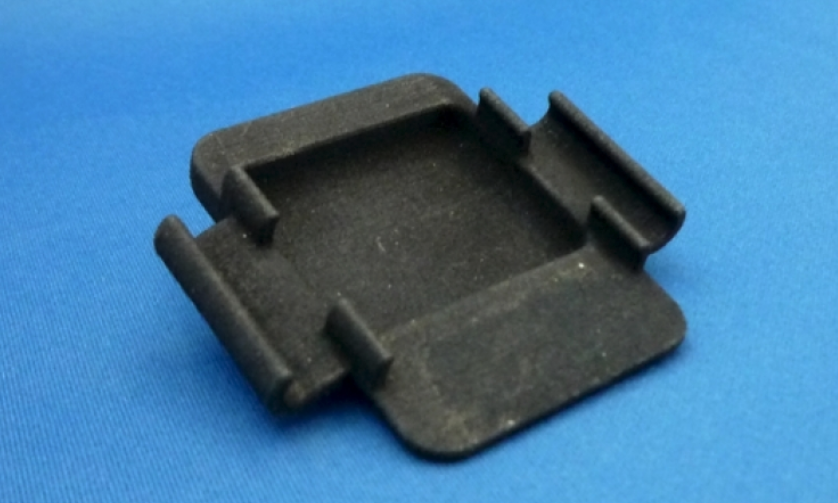CX1 CODA Sensor Units
The CX1 sensor unit (CODA unit) is at the heart of every Codamotion 3D system for indoor applications.
Uniquely, the CX1 combines three motion sensing arrays into one unit. This allows a standalone CX1 unit to make a complete 3D measurement without reference to any other units. It also means that the unit can be pre-calibrated and sealed. All the user does is to point the unit at the action.
A CX1 unit is just 800mm long and weighs just 5kg! A user can move a CX1 unit to a new location, set up and start recording data in minutes.
The unique Codamotion sensing technology allows the CX1 to achieve resolutions as high as 1 in 70,000 within its field of view (equivalent to 1/10th of a pixel in a 50 Megapixel camera).
A CX1 uniquely identifies each marker with 100% reliability, so 3D marker trajectories are available for immediate analysis and display on a host computer with achievable latency (delays) of less than 0.5 milliseconds, perfect for real time applications.
The captured field expands at 1.6 x the distance from the CODA unit. Nominal operating range is between 2.0m and 4.5m from the unit (nominal capture volume approximately 75 cubic metres), though it is possible to go out to 10m and beyond with high power markers under normal laboratory conditions.

CXS CODA Sensor Units
The CXS sensor unit (CODA unit) is capable of operating in bright sunlight up to 90,000 Lux.
Like its indoor sister product, the CXS combines three motion sensing arrays into one unit. This allows a standalone CXS unit to make a complete 3D measurement without reference to any other units. It also means that the unit can be pre-calibrated and sealed. All the user does is to point the unit at the action.
A CXS unit is usable indoors or outdoors.
A CXS unit is just 800mm long and weighs just 5kg! A user can move a CXS unit to a new location, set up and start recording data in minutes, with no on-site calibration required.
The unique Codamotion sensing technology allows the CXS to achieve resolutions as high as 1 in 20,000 within its field of view (equivalent to less than a half pixel in a 50 Megapixel camera). A CXS uniquely identifies each marker with 100% reliability, so 3D marker trajectories are available for immediate analysis and display on a host computer with achievable latency (delays) of less than 0.5 milliseconds, perfect for real time applications.
The captured field expands at 1.6 x the distance from the CODA unit. Nominal range is between 2.0m and 4.5m distance from the unit (the nominal capture volume is approximately 75 cubic metres), though it is possible to go out to 8m and beyond with high power markers under good conditions.
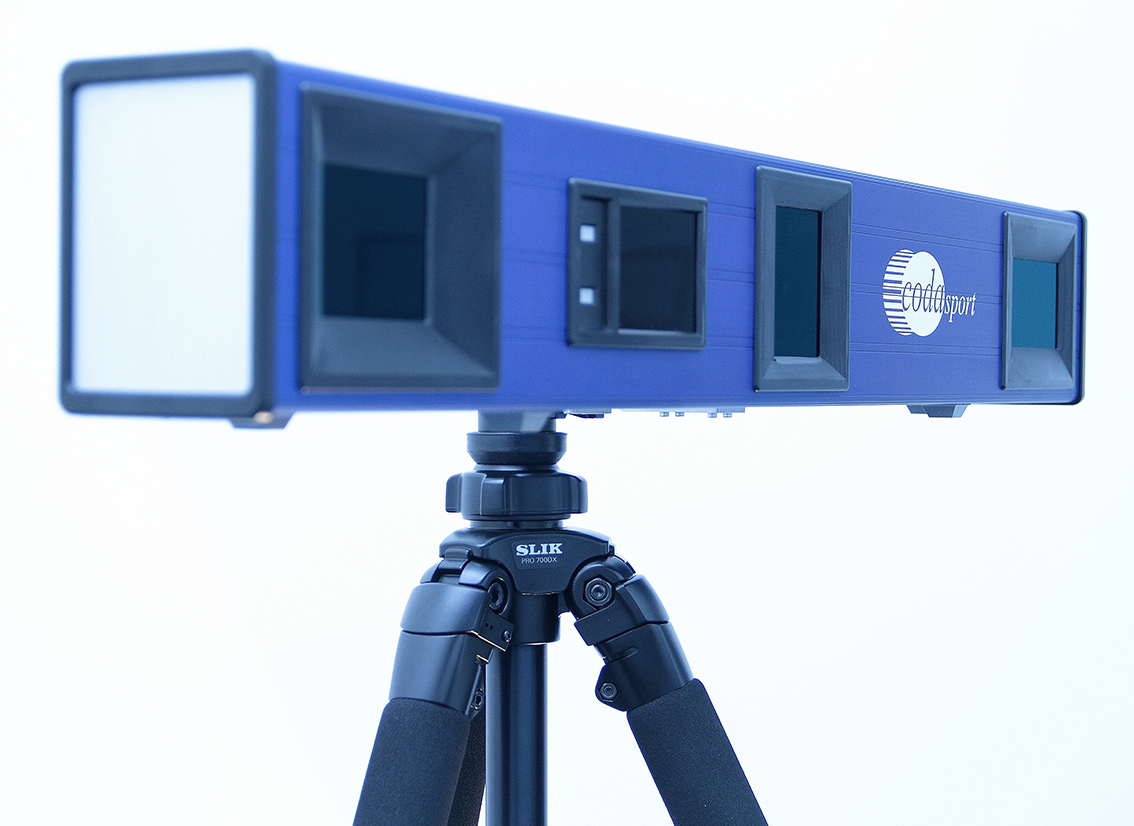
Markers: Standard
All markers are compatible with the complete family of Codamotion marker drive boxes. They take their marker ID from the marker drive box.
Standard markers are recommended for experimental set ups where markers will be closer than 3 metres from the CODA sensor units (although the markers will generally function up to 6 or 7 metres from the unit.) They are ideal for use in capturing, for example, reaching tasks where fine detail is measured by placing the senor unit close to the subject.
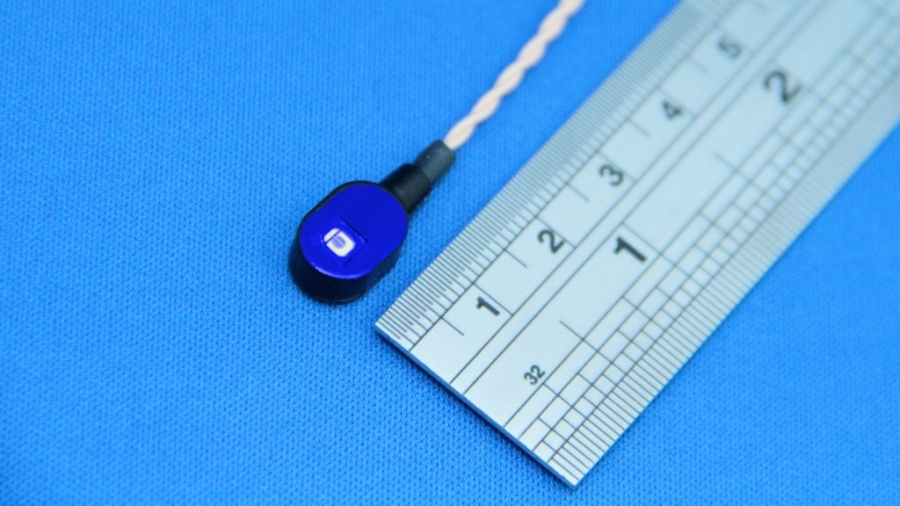
Markers: High Powered
This High Power option comes in a variety of lead lengths from 100 to 600mm. All markers are compatible with the complete family of Codamotion marker drive boxes. They take their marker ID from the marker drive box.
The brighter High Power markers (identified by their blue shell) are recommended for experimental set ups where the markers are more than 3 metres from the CODA sensor units (although the markers will normally function down to 2 – 2.5 metres from the unit). They are ideal for capturing, for example, sporting activity, since they will typically measure up to 10+ metres from the CODA sensor.

Markers: Drive Boxes
Codamotion active markers are available individually or within a ready-made cluster that has power on board. When Codamotion active markers are used individually, they are powered by our latest quad marker drive boxes.
Codamotion’s 4-marker drive box is half the size of a matchbox and lighter than a silver dollar. It allows the user to power a set of active markers (see sections on standard and high power markers) on a body segment, adding a mass of no more than 22 grams. Each drive box has the capacity to power up to 4 active markers, is chargeable and programmable via a USB socket and is fully compatible both with existing 2- and 8-marker drive boxes and with the recently introduced range of marker clusters.
The drive doxes come in two varieties: QMDB for use with the CX1 unit systems, and QMDB-SP for use with CXS Codasport units

Marker Clusters & Pointers: Standard Cluster
Codamotion clusters define a rigid body that gives 6-degree of freedom information when attached to, for example, limb segments.
They are lightweight and easy to apply, making for easier and simpler marker protocols with our ODIN software.
Clusters eliminate the need for wires to active markers and allow the user to easily define a rigid body. The sophisticated 4-marker rigid cluster is both straightforward and quick to attach and remove from different limb contours.
They are available in two sizes, and in three versions: low power indoor (for use with CX1), high power indoor (for use with CX1), and high power outdoor (for use with CXS). Users will normally require and anatomical pointer to work with protocols involving clusters)
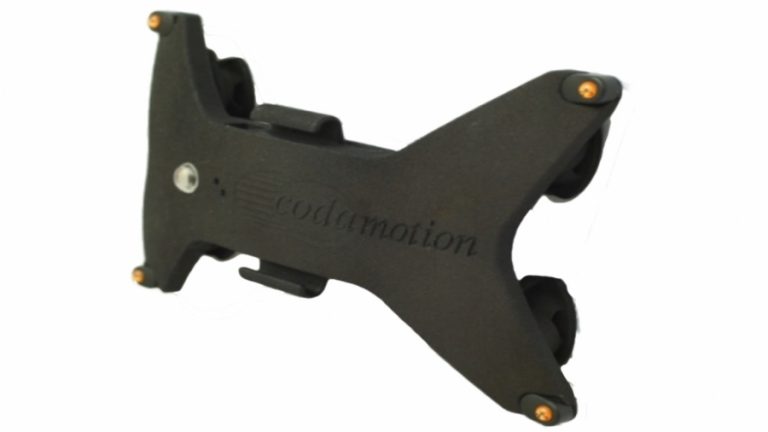
Marker Clusters & Pointers: Mini Cluster
The mini cluster plate can be used as a rigid body with four markers to give 6 DoF data for the body (as in our cluster product range), but the plate comes without a marker drive box or markers intergrated into it, allowing users to form their own rigid bodies.
It is small and therefore very useful for tracking the position of the radius and ulna styloids and the orientation of the lower arm.
It can also be used for deploying a cluster protocol on very small children and small animals.
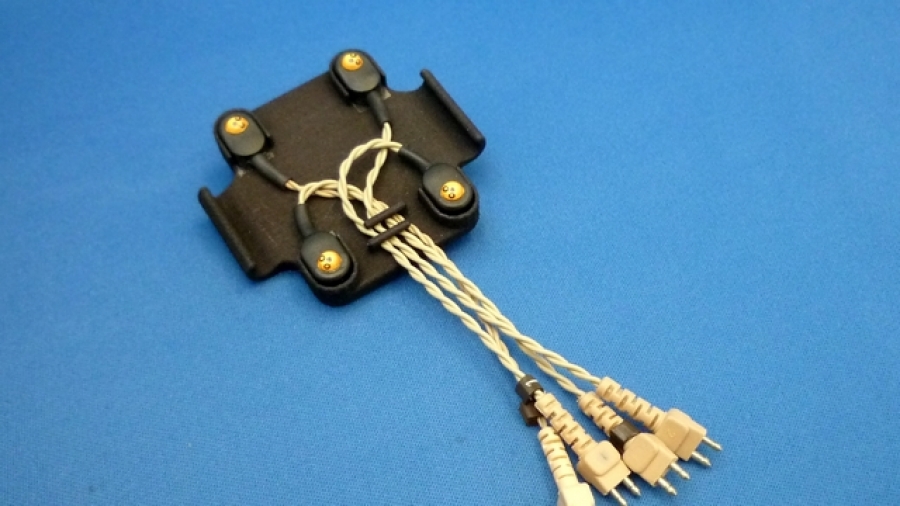
Marker Clusters & Pointers: Acromion Cluster
The acromion marker cluster is a 4-marker cluster especially designed to track the movement of the scapula.
The acromion marker cluster has been specially designed according to the International Society of Biomechanics (ISB) recommendations to provide scapula position estimation close to palpation recordings by reducing skin movement artefact. This device needs to be positioned on the top of the acromion process and after a static acquisition, the recording of the acromion cluster provides the calculated position of the scapula.
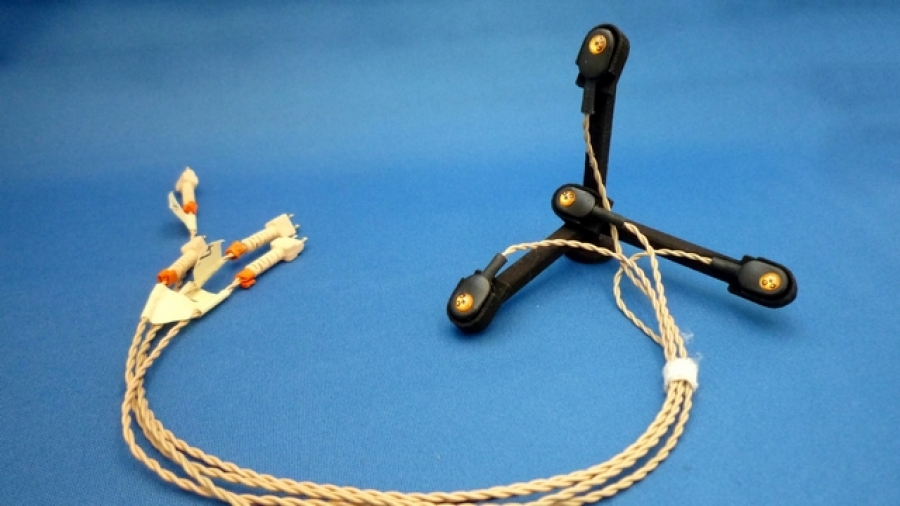
Pointer
A simple active pointer for use with clusters etc. when marking anatomical points in static trials in ODIN Software Suite.

Pelvic Frame
The pelvic frame has been specially designed to track the pelvis position and orientation, and to work effectively when sensor units are placed bilaterally.
This can be used in gait protocols using leg wands or clusters, depending on the anatomical model being preferred. It uses a special elasticated belt material to provide a firm base on the pelvis. The frame itself fixes onto the belt once it is secure and is adjustable over a wide range of pelvic widths.
The Pelvic Frame contains 6 integrated markers (2 on each wand and 2 on the tail); and all of the electronics are embedded in the device. It has been to provide tracking according to the International Society of Biomechanics (ISB) recommendations.
The Pelvic frame can be purchased as a separate item (GAIT-PELVIC) or as part of one of our gait wand sets.
The device is resizable and can be used for adults and children. The optional tail (GAIT-SACRAL) is detachable and will dislodge itself in case of a fall.
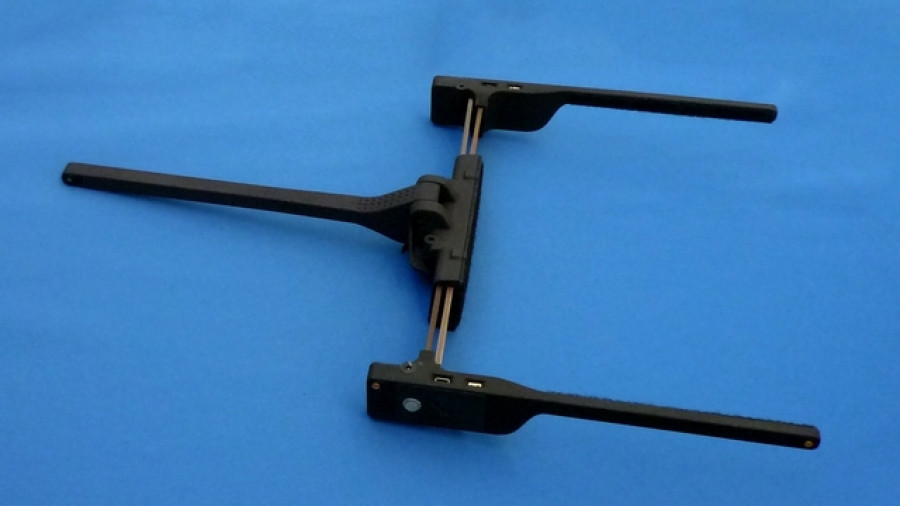
Gait Wands
Gait Wand Sets help to provide fast, accurate measurements of human gait, using a proven derivative of the Helen Hayes model as a basis.
Gait Wand Set
Each Gait Wand Set includes a pelvic frame, thigh wands, shank wands, an ankle alignment jig. The required markers and marker drive boxes for feet and knees come from our standard range of markers and drive boxes. Each component can be charged and/or reprogrammed to alternative marker ID numbers to suit the user’s customized marker protocol through an integral mini USB port (with USB lead supplied). Gait Wand Sets come in either adult or child sizes.
Thigh & Shank Wands
Thigh and shank wands attached around the femur and tibia use a pair of markers to define the axial orientation of their host segment. These wands are a convenient solution for faithfully registering bone-pose whilst permitting rapid attachment to non-anatomical positions. Silicone rubber coated pads give high shear grip to skin.
Floor Alignment Jig
The floor alignment jig provides a rapid way to define the 3D coordinate system to use as the reference for measurements.
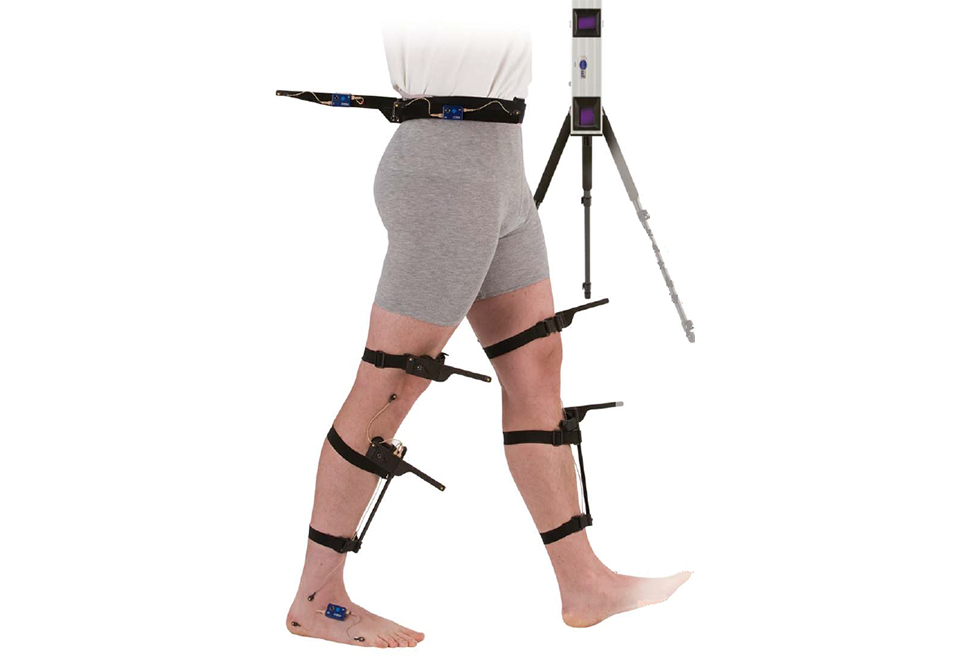
Pelvic Frame
The pelvis is represented by markers on a frame which clamps around the pelvis.
The sides of the frame lie in the plane of ASIS & PSIS pelvic landmarks. The physical alignment of the PSIS markers ensure a faithful representation of the pelvis segment and its hip-joint centres modelled according to Bell’s method.

Wrist Plate
The Codamotion wrist plate allows you to attach the marker drive box to the body using straps very simply without the use of tape.
